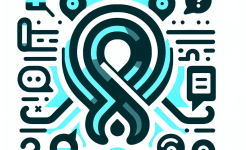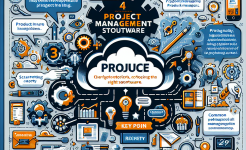Unlike traditional project management methods, which often rely on rigid plans and extensive upfront documentation, iteration planning embraces change and uncertainty. It acknowledges that requirements may evolve, priorities may shift, and unforeseen challenges may arise. By planning in iterations, teams can respond to these changes more effectively, ensuring that the project remains aligned with stakeholder needs. Moreover, iteration planning promotes a culture of accountability and ownership, as team members actively participate in setting goals and defining deliverables. This collaborative process not only improves team morale but also increases the likelihood of project success.
The importance of iteration planning cannot be overstated. It provides a structured yet flexible framework that enables teams to deliver high-quality results consistently. By focusing on small, achievable increments, teams can maintain momentum, reduce risks, and deliver value early and often. Furthermore, iteration planning creates opportunities for regular feedback and reflection, allowing teams to learn from their experiences and make necessary adjustments. In a world where change is the only constant, iteration planning empowers teams to navigate complexity with confidence and agility.
The Purpose of Iteration Planning
The primary purpose of iteration planning is to align the team around a shared goal and define the work that needs to be accomplished during the iteration. This process ensures that everyone understands the objectives, priorities, and deliverables, reducing the likelihood of misunderstandings or misaligned efforts. By setting clear expectations, iteration planning helps teams stay focused and motivated, even in the face of challenges. It also provides a roadmap for the iteration, enabling team members to allocate their time and resources effectively.
Another key purpose of iteration planning is to break down larger tasks into smaller, more manageable pieces. This approach not only makes the work less overwhelming but also allows for more accurate estimation and tracking. By dividing tasks into smaller increments, teams can identify potential bottlenecks or dependencies early on, reducing the risk of delays or scope creep. Additionally, this incremental approach enables teams to deliver value continuously, which is particularly important in fast-paced environments where stakeholders expect frequent updates and tangible results.
Iteration planning also serves as a mechanism for fostering collaboration and communication within the team. During the planning session, team members have the opportunity to discuss their ideas, share their expertise, and address any concerns or questions. This open dialogue promotes a sense of ownership and accountability, as everyone contributes to the plan and commits to its success. Moreover, iteration planning encourages transparency, as all team members have visibility into the tasks, timelines, and dependencies. This shared understanding helps build trust and strengthens the team’s ability to work together effectively.
Key Elements of Iteration Planning
One of the most critical elements of iteration planning is defining the iteration goal. This goal serves as the North Star for the team, guiding their efforts and providing a clear sense of direction. The iteration goal should be specific, measurable, achievable, relevant, and time-bound (SMART), ensuring that it aligns with the broader project objectives. By establishing a clear goal, teams can prioritize their work and make informed decisions about what to include in the iteration. It also helps maintain focus and prevents scope creep, as team members can refer back to the goal whenever they encounter ambiguity or conflicting priorities.
Another essential element of iteration planning is task breakdown and estimation. During this phase, the team decomposes the user stories or requirements into smaller tasks, making them easier to understand and execute. Each task should be described in sufficient detail to eliminate ambiguity and ensure that everyone knows what needs to be done. Estimation is equally important, as it helps the team gauge the effort required for each task and allocate resources accordingly. Techniques such as story points or time-based estimates can be used to facilitate this process. Accurate estimation not only improves planning but also enhances the team’s ability to meet commitments and deliver on time.
The final key element of iteration planning is capacity planning. This involves assessing the team’s availability and determining how much work they can realistically accomplish during the iteration. Factors such as team size, individual skill sets, and external commitments must be taken into account to avoid overloading the team. Capacity planning ensures that the iteration plan is feasible and sustainable, preventing burnout and maintaining a healthy work pace. It also provides a buffer for unexpected issues or changes, allowing the team to adapt without compromising the quality or timeline of the deliverables.
Best Practices for Effective Iteration Planning

To maximize the effectiveness of iteration planning, it is essential to involve the entire team in the process. Collaboration is a cornerstone of agile methodologies, and iteration planning is no exception. By engaging all team members, you can leverage their diverse perspectives and expertise, leading to more comprehensive and realistic plans. Additionally, involving the team fosters a sense of ownership and commitment, as everyone has a stake in the plan’s success. This collaborative approach also helps identify potential risks or challenges early on, enabling the team to address them proactively.
Another best practice is to keep the planning session focused and time-boxed. Iteration planning should be thorough but not overly lengthy, as this can lead to diminishing returns. Setting a time limit encourages the team to prioritize the most critical discussions and decisions, ensuring that the session remains productive. Time-boxing also helps maintain momentum and prevents the team from getting bogged down in unnecessary details. By striking the right balance between thoroughness and efficiency, you can create a plan that is both actionable and adaptable.
Finally, it is crucial to review and refine the iteration plan regularly. Agile methodologies emphasize continuous improvement, and iteration planning is an excellent opportunity to apply this principle. After each iteration, the team should conduct a retrospective to evaluate what went well, what could be improved, and how to apply these lessons to future planning sessions. This reflective practice not only enhances the team’s planning skills but also fosters a culture of learning and growth. By continuously refining the iteration planning process, teams can become more effective, efficient, and resilient over time.
Conclusion
Iteration planning is a cornerstone of agile project management, enabling teams to deliver value incrementally while remaining adaptable to change. By breaking down work into manageable chunks, setting clear goals, and fostering collaboration, iteration planning provides a structured yet flexible framework for success. It empowers teams to prioritize effectively, allocate resources wisely, and respond to challenges proactively. Moreover, iteration planning promotes transparency, accountability, and continuous improvement, creating a culture of excellence and innovation.
The benefits of iteration planning extend beyond the immediate project. By delivering value early and often, teams can build trust with stakeholders and demonstrate their commitment to success. Regular feedback and reflection also enable teams to refine their processes and improve their performance over time. In a world where uncertainty is the norm, iteration planning equips teams with the tools and mindset needed to thrive in dynamic environments. It is not just a methodology but a philosophy that emphasizes collaboration, adaptability, and a relentless focus on delivering value.
In conclusion, iteration planning is an indispensable practice for any agile team. It provides the structure and clarity needed to navigate complexity while maintaining the flexibility to adapt to changing circumstances. By embracing iteration planning, teams can achieve their goals more effectively, build stronger relationships with stakeholders, and create a culture of continuous improvement. Whether you are new to agile or a seasoned practitioner, mastering iteration planning is a critical step toward achieving project success and driving organizational excellence.
FAQ
1.What is the difference between iteration planning and sprint planning?
Iteration planning and sprint planning are essentially the same concept, with the term "sprint" being specific to Scrum. Both involve breaking down work into short, time-boxed periods and defining the tasks to be completed. The key difference lies in the terminology and the specific framework being used.
2.How long should an iteration last?
The duration of an iteration can vary depending on the project and team preferences. Typically, iterations last between one to four weeks, with two weeks being the most common. The length should be chosen based on the team’s capacity, the complexity of the work, and the need for frequent feedback.
3.What happens if the team cannot complete all the planned tasks during an iteration?
If the team cannot complete all the planned tasks, it is important to review the reasons during the retrospective. The unfinished tasks can be carried over to the next iteration, but the team should also assess whether the plan was overly ambitious or if unforeseen challenges arose. This reflection helps improve future planning and ensures sustainable progress.
ARTICLE TITLE :Iteration planning in agile project management ,AUTHOR :ITpmlib

















